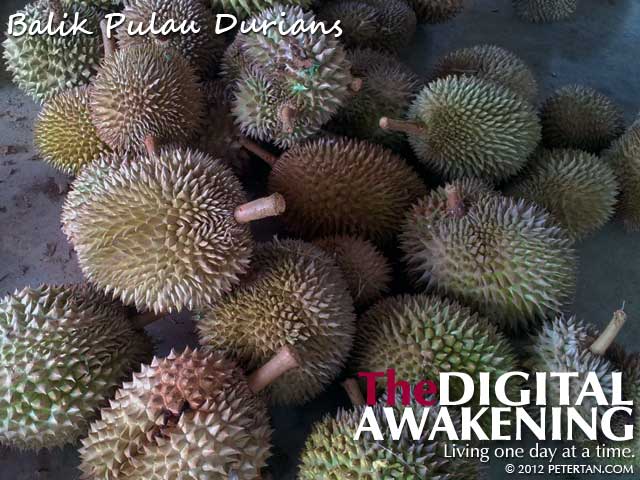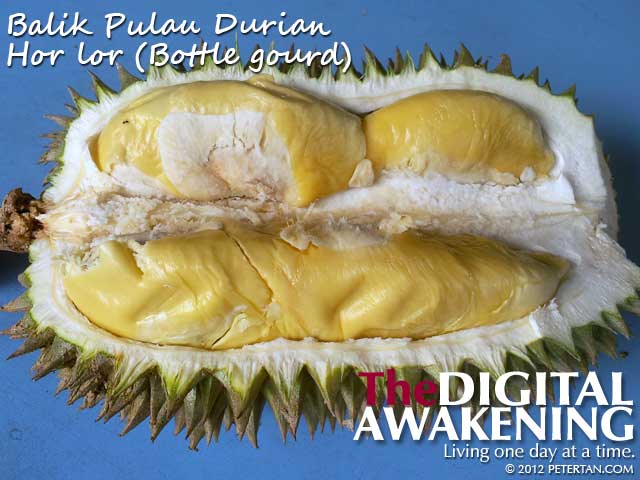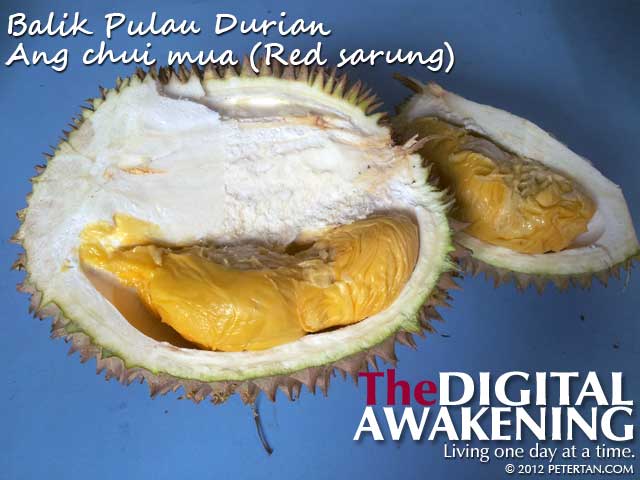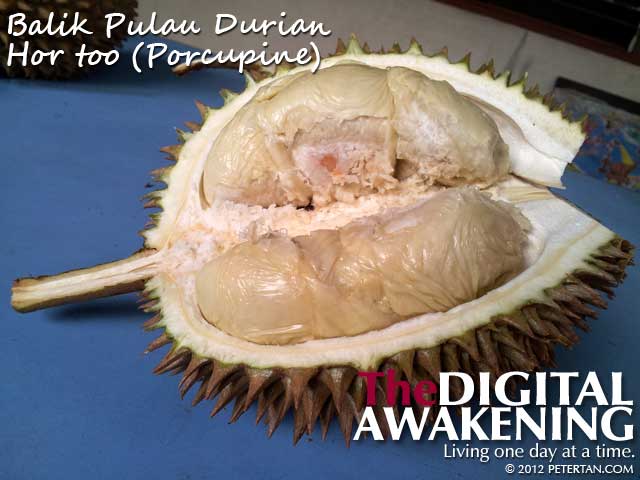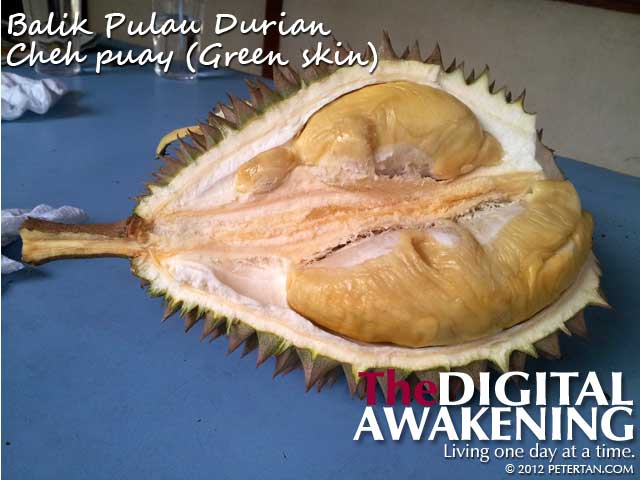Ah Wong’s wife had told us that there would be a second durian season for the year when we were there in June. Incidentally, we arrived at the tail-end of the season again, just like what happened on the previous trip. We did not pre-book any durian from Ah Wong this time and decided to simply drop in to test our luck. He was not around when we arrived anyway, having gone to Macalister Road where he has another stall. The fruits fetch a better price there.
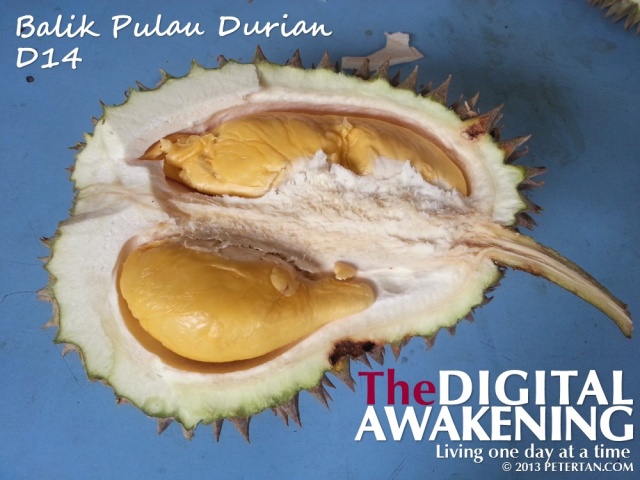
D14 Balik Pulau durian.
His father served us. There were still a few “ho bak” durians that were reserved for regular customers. We picked two medium sized fruits. The first was D14. Its deep yellow flesh was sweet and sticky, and imparted a strong fragrance. There was a slight bitter aftertaste which I thought did not jive well with the initial sweetness.
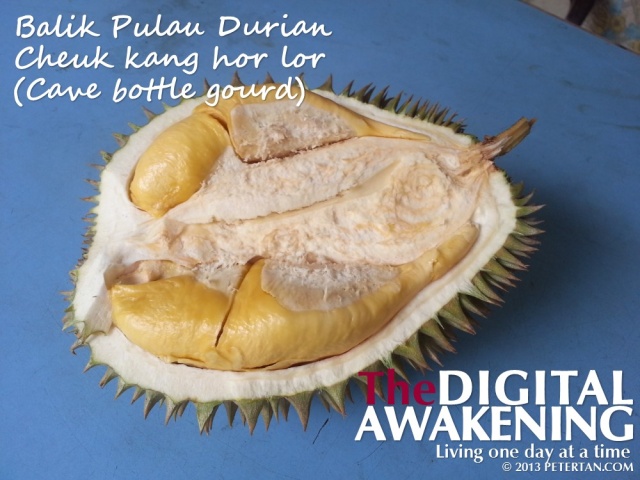
Cheuk kang hor lor Balik Pulau durian.
We had hor lor during the previous trip but since good durians were in short supply, beggars could not be choosers. Ah Wong’s father called it “cheuk kang hor lor” or cave bottle gourd durian. The name probably came from the tree growing near a cave. Its pleasantly sweet aroma hit my olfactory senses just as I took the first bite. This popular cultivar has a very sweet taste that came from its smooth and fine textured flesh. The best of all was the undeveloped seeds called “chew hoot” which made the flesh even thicker.
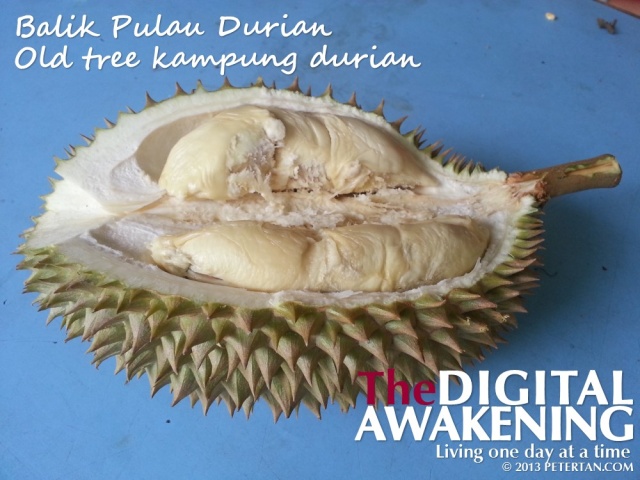
Balik Pulau old tree kampung durian.
The second fruit did not satiate our cravings. Ah Wong’s father recommended a kampung durian. Its cream coloured flesh belied the unique pungence and bitter taste which we both liked. Unlike many of such durians, it had small seeds. These kampung durians are not as popular for the connoisseurs but I would not mind having them over the more sought after cultivars like ang heh or hor lor.
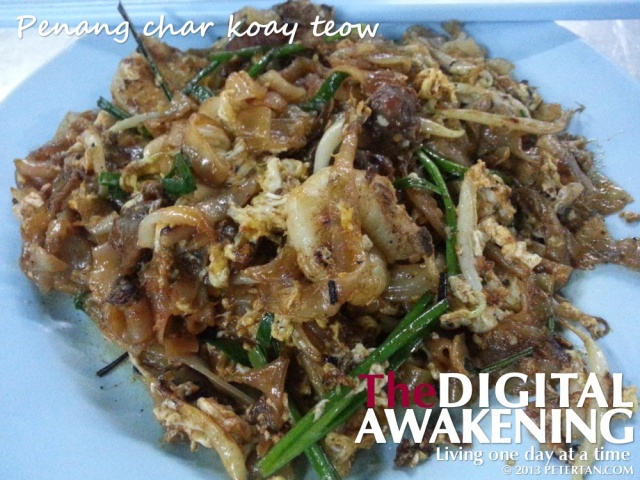
Penang char koay teow in all its glory at Mutiara Selera @ Pearl Restaurant in Island Glades.
After we left Balik Pulau with the aroma of durians still clinging to our lips, we went to Giant Hypermarket at Bayan Baru for me to use the toilet and while some time away waiting to have dinner with my cousin Peter. The idea was to eat seafood porridge at Joo Leong Cafe at Sungai Tiram. The shop was located by the road with with few suitable spots for parking. We could not find one where I could get out safely from the car. In the end, we went to Island Glades instead.
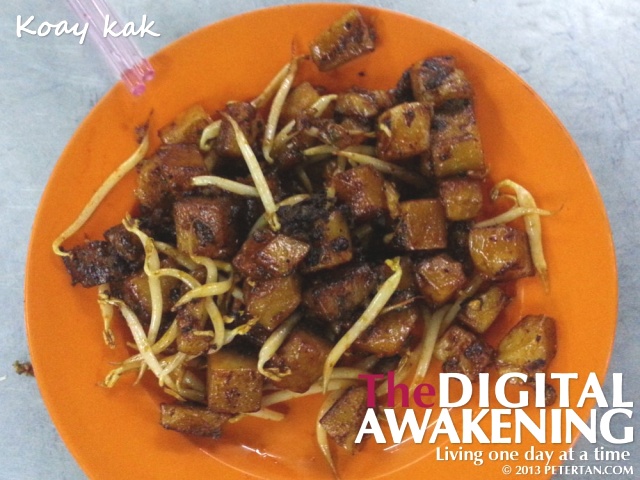
Koay kak without eggs at Mutiara Selera @ Pearl Restaurant in Island Glades.
Mutiara Selera @ Pearl Restaurant is famous for its duck egg char koay teow that I would not miss whenever I am around the vicinity. I ordered mine with chicken eggs. It was still as good although my appetite was somewhat curbed by the durians earlier. I did not enjoy it as much as I should. The koay kak there seemed popular too and I had one without eggs. It was a mistake. Koay kak without egg was just not that delicious. With that, our food adventure in Penang ended. We were to leave for Ipoh early the next day.

